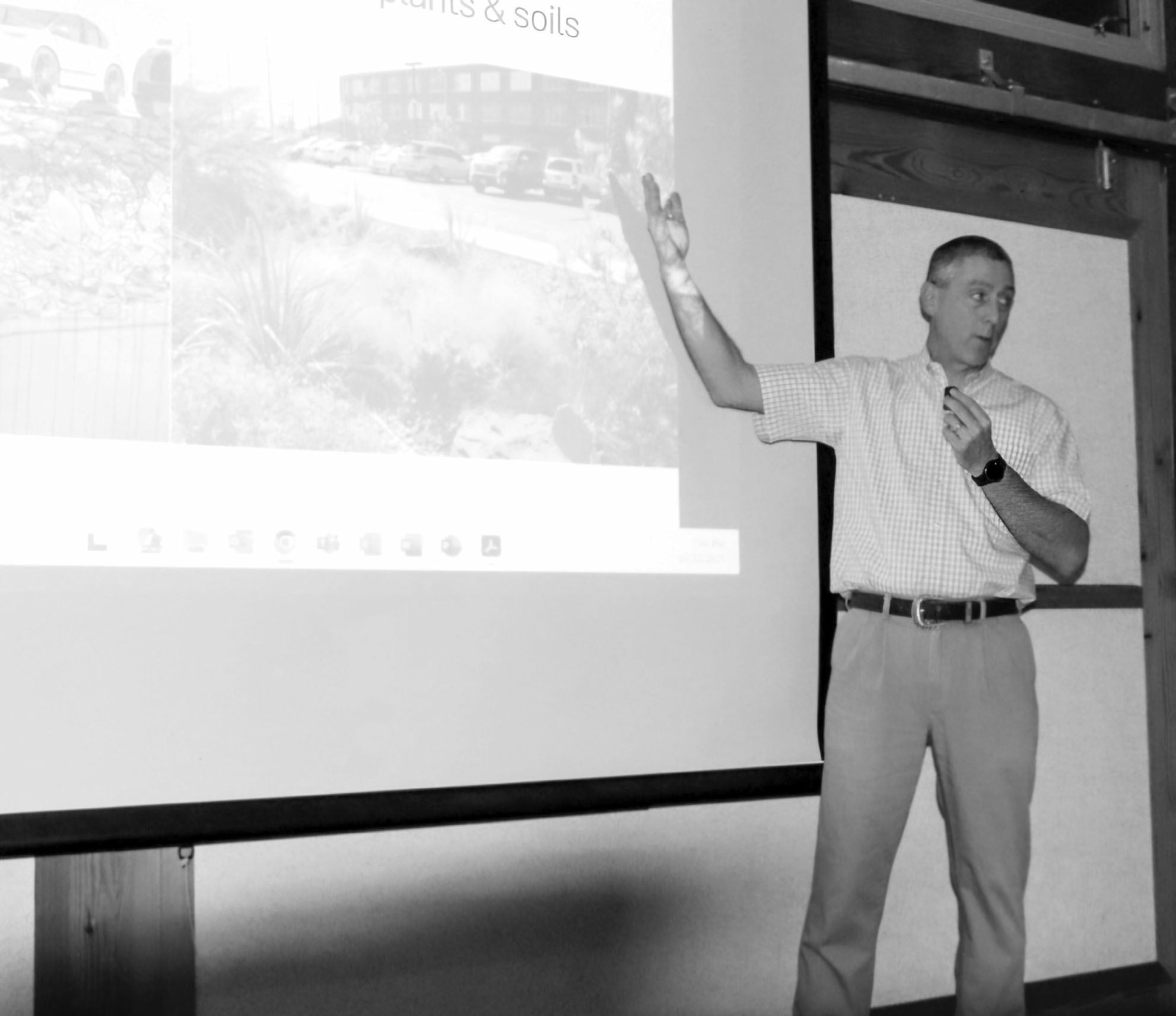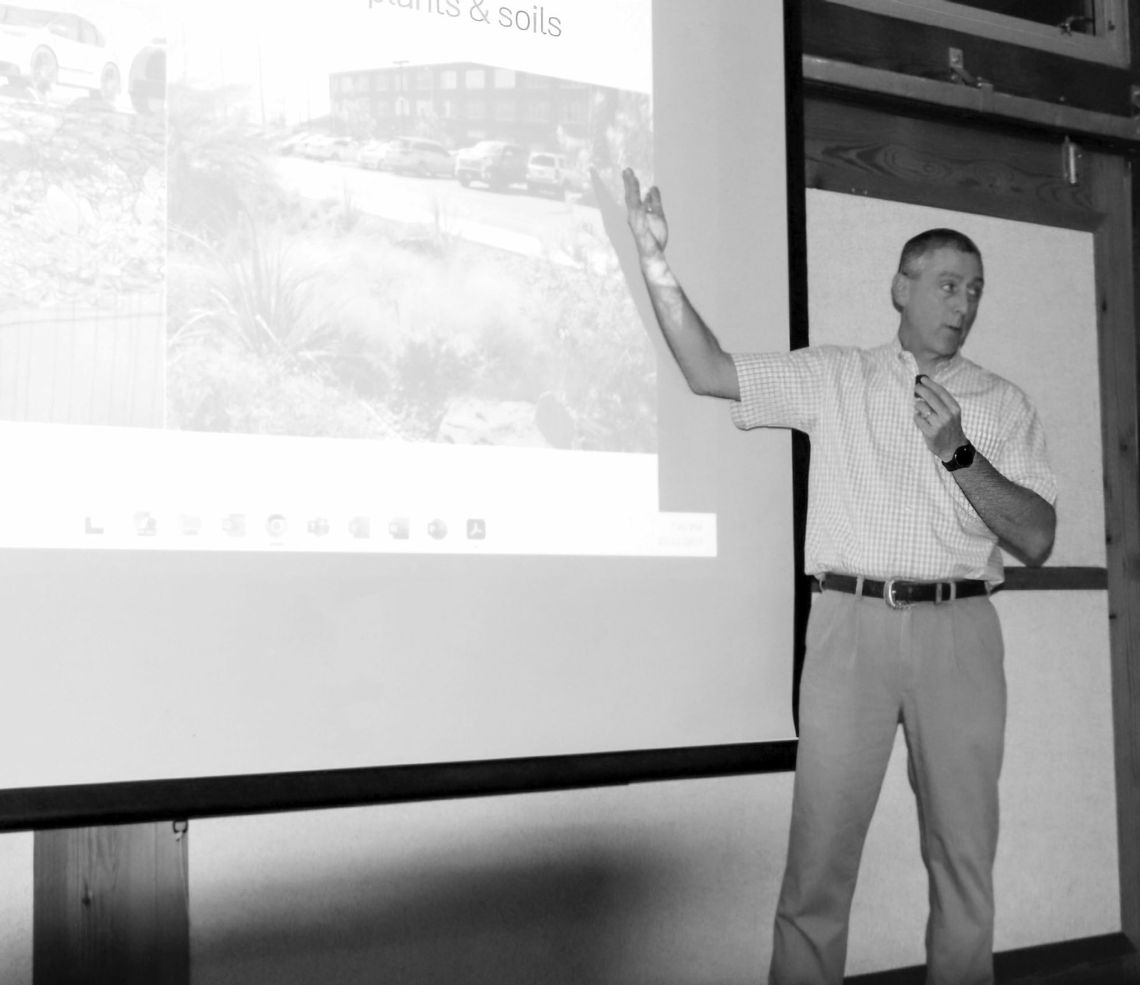Retaining, conserving water focus of The Cibolo ‘Resilience’ series
Native landscaping and land conservation are two important methods of conserving and preserving the water supply along the Upper Cibolo Creek Watershed.
Two experts addressed stormwater management, low-impact development guidance and riparian zones Wednesday as part of the “Rooted in Resilience” series presented by the Cibolo Center for Conservation, reviewing the science behind flooding, the policies that shape our water use, and the local actions that make our watershed stronger.
“Any time we develop, whether it’s urban or agricultural, you’re impacting how water and stormwater runoff interact with the land,” said Joan Bryant, a professional engineer with the San Antonio River Authority.
“As you develop and as you create surfaces that are impermeable,” Bryant said, “water can't filter through them, which leads to a greater volume of water flowing into creeks and rivers at a higher velocity, with less infiltration.”
Troy Dorman, water sustainability leader at Halff Associates, worked with Boerne to develop its 2018 master plan. Some of the plan’s goals included a desire for improved walkability, preservation of key natural assets, a desire to balance development with quality of life, and an interest in low-impact developmental strategies.
“In the past, a lot of the things we’ve done as engineers have not really looked at quality of life, unfortunately,” Dorman said. “We’ve developed neighborhoods, but we haven’t really developed neighborhoods that created a good quality of life for the people that live there.”
In 2013, Dorman helped write the Low Impact Development Guidance Manual, which Boerne adopted as its guide for new development within the city.
“The city of Boerne has the most integrated and highest standards for stormwater management out there,” Dorman said. “These same types of concepts that are required for new development in Boerne can apply to an existing piece of property, to your property – things that can be retrofit back to properties that have a little bit of room.”
Dorman told those attending the session — part three of four in The Cibolo’s “Rooted In Resilience” series — what they can do as individuals about runoff, preservation and conservation.
“Slow it down, spread it out, and soak it in. Those are our three big-picture ideas. That’s what we want to do with stormwater runoff,” he said. “When we ‘soak it in,’ that becomes our water supply, which is really great because we’re preserving our water supply.”
Rainwater capture can come in any style or size: catch basins, rain barrels, cisterns, rain gardens dug into yards, even angling downspouts into grassy areas instead of onto concrete or asphalt drives. “These are great first steps that everybody can do,” he said.
The retained water can then be used on gardens, plants and shrubs. “If you do use it on your garden, or to water your plants, then you’re reducing potable water use, so it helps our water supply,” he added.
Something as simple as turning a downspout into a grassy area, he said, can reduce runoff by as much as 70 percent.
“Even in soils around here which we think are clay, (the rainwater) will actually infiltrate if you slow it down, spread it out and let it soak in,” Dorman repeated.
Bryant spoke to “land conservation as flood mitigation” through easements, preserved areas, natural buffers, drainageways and healthy soils. She said she is also a big fan of riparian zones.
“I think riparian zones are so important; they are crucial for droughts and flooding, to help keep those in their natural state with the native vegetation,” she said.
Resilient watersheds will handle stress, adapt to change and recover naturally, she said. And native plants and landscaping are vital to flourishing riparian zones.
“Native plants, with those deep extensive root systems to help gather and survive during drought periods, also protect our soil in our banks from erosion,” she added.










Comment
Comments